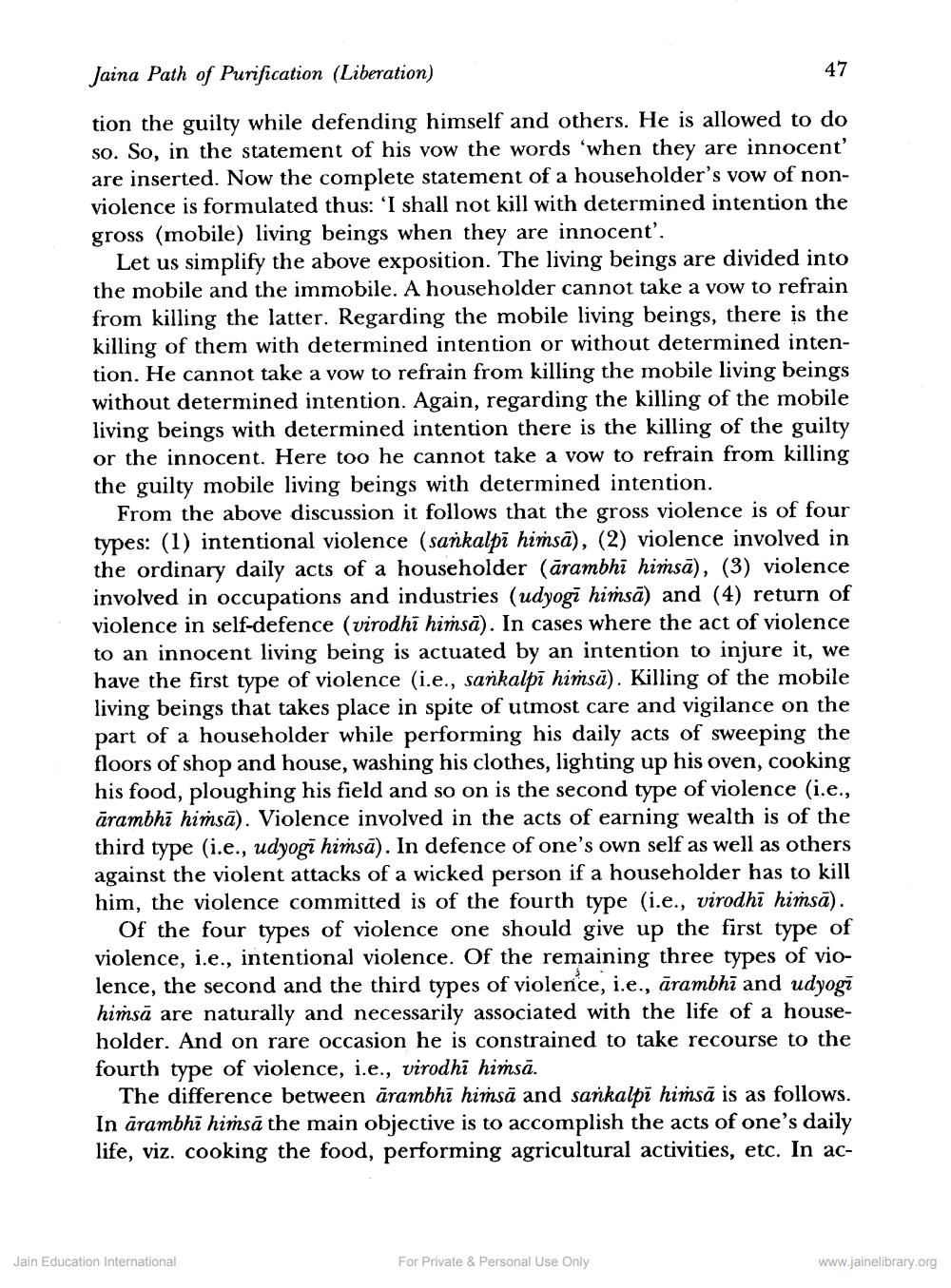________________
Jaina Path of Purification (Liberation)
47
tion the guilty while defending himself and others. He is allowed to do so. So, in the statement of his vow the words 'when they are innocent' are inserted. Now the complete statement of a householder's vow of nonviolence is formulated thus: 'I shall not kill with determined intention the gross (mobile) living beings when they are innocent'.
Let us simplify the above exposition. The living beings are divided into the mobile and the immobile. A householder cannot take a vow to refrain from killing the latter. Regarding the mobile living beings, there is the killing of them with determined intention or without determined intention. He cannot take a vow to refrain from killing the mobile living beings without determined intention. Again, regarding the killing of the mobile living beings with determined intention there is the killing of the guilty or the innocent. Here too he cannot take a vow to refrain from killing the guilty mobile living beings with determined intention.
From the above discussion it follows that the gross violence is of four types: (1) intentional violence (sankalpī hiṁsā), (2) violence involved in the ordinary daily acts of a householder (ārambhi himsā), (3) violence involved in occupations and industries (udyogi himsā) and (4) return of violence in self-defence (virodhi hiṁsā). In cases where the act of violence to an innocent living being is actuated by an intention to injure it, we have the first type of violence (i.e., sankalpī himsā). Killing of the mobile living beings that takes place in spite of utmost care and vigilance on the part of a householder while performing his daily acts of sweeping the floors of shop and house, washing his clothes, lighting up his oven, cooking his food, ploughing his field and so on is the second type of violence (i.e., ārambhi hiṁsā). Violence involved in the acts of earning wealth is of the third type (i.e., udyogi himsā). In defence of one's own self as well as others against the violent attacks of a wicked person if a householder has to kill him, the violence committed is of the fourth type (i.e., virodhi himsā).
Of the four types of violence one should give up the first type of violence, i.e., intentional violence. Of the remaining three types of violence, the second and the third types of violence, i.e., ārambhi and udyogi himsā are naturally and necessarily associated with the life of a householder. And on rare occasion he is constrained to take recourse to the fourth type of violence, i.e., virodhi hiṁsā.
The difference between ārambhi himsā and sankalpī hiṁsā is as follows. In arambhi himsā the main objective is to accomplish the acts of one's daily life, viz. cooking the food, performing agricultural activities, etc. In ac
Jain Education International
For Private & Personal Use Only
www.jainelibrary.org




